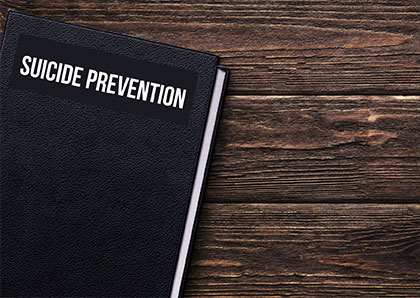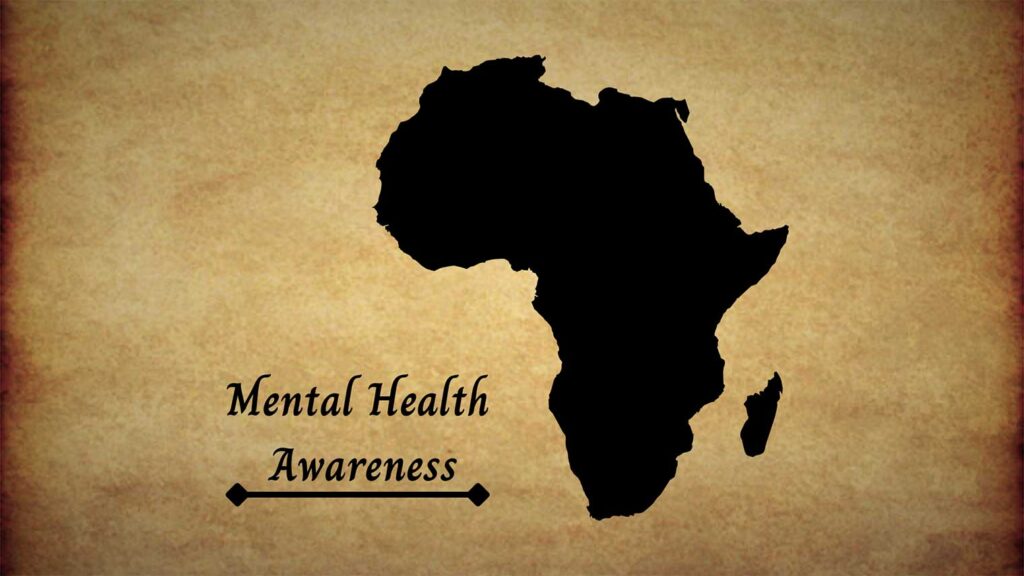By MMHI Team
Suicide is a sensitive and heavily stigmatised topic. It is essential to have open and honest discussions.
Suicide awareness is critical because it helps us understand the complexities of mental health, identify warning signs, and provide support to those who need it most.
By talking about suicide, we can break down barriers, promote empathy, and encourage individuals to seek help without fear of judgment.
Brief Statistics and Awareness
Here are some alarming statistics about suicide in Nigeria and globally:
- Nigeria: According to the World Health Organisation (WHO), Nigeria has a suicide rate of 9.5 per 100,000 people
- Global: The WHO reports that approximately 800,000 people die by suicide every year, making it the 18th leading cause of death worldwide.
- Youth: Globally, suicide is the third leading cause of death among young people aged 15-29.
- Mental health: 80% of Nigerians with mental health conditions do not receive treatment
These statistics emphasise the need for increased awareness, education, and support for mental health and suicide prevention in Nigeria and globally.
By discussing suicide openly and honestly, we can :
- Reduce stigma around mental health
- Encourage individuals to seek help
- Promote supportive communities
- Develop effective prevention strategies
- Let’s work together to create a safer, more supportive environment for everyone.
Common Myths vs Reality
Suicide is surrounded by misconceptions that often hinder effective prevention. A common myth is that “people who talk about suicide will not actually attempt it“. In reality, many individuals who die by suicide previously expressed verbal or behavioural warning signs, which, if observed in time, could have prompted intervention, but were unconsciously ignored.
Another myth is that “asking someone about suicide encourages the act“. Empirical studies demonstrate that inquiring about suicidal ideation does not “plant the idea” but rather creates an avenue for open dialogue and support. It makes them feel noticed and worthy; little things make changes.
It is also falsely believed that “suicide occurs without warning“. On the contrary, most victims exhibit clear warning signals such as withdrawal, mood changes, or expressing hopelessness. Additionally, suicide is not limited to individuals with mental illness. While mental health conditions are risk factors, situational crises such as financial hardship, trauma, or relationship breakdowns can equally contribute
Finally, “a person who survives a suicide attempt is assumed to be out of danger“. In truth, past attempts are among the strongest predictors of future risk, necessitating continuous monitoring and professional intervention.

How to Approach & Support Someone
Approaching an individual experiencing suicidal thoughts requires sensitivity, empathy, and practicality.
First, one must recognise warning signs such as isolation, mood instability, or verbal cues relating to death. Conversations should be initiated in a non-judgmental, private space. Open-ended inquiries, for example, “I have noticed changes in you lately, are you thinking about harming yourself?” are recommended.
Support is best offered through active listening and reassurance, avoiding dismissive remarks. Encouraging professional help is critical; this may include contacting a mental health professional, counsellor, or helpline. In high-risk situations, immediate safety measures such as restricting access to lethal means and contacting emergency services are essential.
Continuous follow-up through visits, calls, or messages reinforces the individual’s sense of belonging and reduces feelings of isolation.
Short Realistic Scenarios: Supporting Someone in Crisis
Scenario 1: The Friend Who Feels Hopeless
Your friend messages you late at night saying they feel like giving up. You respond calmly:
“I’m really glad you told me. I’m here with you. Can we talk about what’s happening right now?”
You listen without judgment, validate their feelings, and gently encourage them to contact a mental health professional or a crisis helpline.
Scenario 2: A Colleague Showing Warning Signs
You notice a co-worker withdrawing from team activities and making comments like, “Nothing matters anyway.” You approach them privately:
“I’ve noticed you’ve seemed down lately. I care about you and I want to help. Do you want to talk, or would you like me to help you find someone to talk to?”
You respect their pace but offer support and resources.
Scenario 3: A Family Member Expressing Suicidal Thoughts
Your sibling says, “I just can’t take it anymore.” You remain calm, avoid minimizing their feelings, and say:
“I hear you. I want to make sure you’re safe. Can we sit together and find someone trained to help us right now?”
You stay with them, remove any immediate means of harm if possible, and contact a crisis line or professional support.
Scenario 4: Checking In Without Being Overwhelming
A friend seems distant and less responsive. You send a simple message:
“Hey, I’ve been thinking about you. I’m here if you want to talk or hang out.”
Even a brief check-in can make someone feel seen, heard, and less alone.
When Crisis Happens: Steps to Take in the Moment
We have talked a lot about suicide, prevention, possible scenarios and the myths around it. But what happens when you come face-to-face with someone who is actively trying to take their life? Let me share a story and walk you through the steps.
I once had a friend who was bubbly, full of life, and the centre of every gathering. One night, a few of us slept over at her place after hanging out. I usually take a long time before falling asleep, so while everyone else was fast asleep, I was still tossing and turning. At some point, my friend got up from her bed. At first, I assumed she was going to the bathroom, but when she left the room entirely, I got curious and followed, thinking she might be sleepwalking.
Step one is to notice and approach safely. I followed her quietly and saw her walk into the kitchen. She poured some water into a cup, opened a cabinet, and started mixing random pills into it. My heart was racing. This was not a movie scene. It was real life.
Step two is to stay calm. In that moment, I reminded myself not to panic. If you panic, you can make things worse. She stood there, mixing with tears rolling down her cheeks. This was not the time to wonder why. The priority was to save her life.
Step three is to interrupt gently. As she picked up the cup, I stepped forward and said, “No.” She was startled, not expecting anyone to see her in such a state and dropped it.
Step four is to connect instead of confront. Rather than shouting or demanding an explanation, I rushed to her and hugged her. She hugged me back and broke down crying. No words, just tears. I cried too, because my heart was heavy.
Sometimes, in the middle of a suicide crisis, our instinct is to pour out anger or questions. But often, a calm presence or a hug is what matters most.
Now you might ask, what if the person locks themselves in a room or holds a weapon? The step remains the same: stay calm. Keep talking gently while finding a safe way to open the door. At the same time, call emergency helplines, but do it discreetly. Some people in crisis are very sensitive to pressure. Stay nearby until help comes.
If they have already harmed themselves, your safety comes first. Maintain a safe distance and call emergency services immediately. Offer simple, validating words like, “I understand how you feel,” until professionals arrive.
Finally, never leave them alone until help comes. And after the crisis, encourage ongoing support. A past attempt is one of the strongest predictors of risk, so professional care and follow-up are essential.
If you ever find yourself in a situation like this, remember you do not have to handle it alone. Professional help and immediate support are available, and reaching out can save a life.
Below are helplines and resources you can contact when someone is in crisis.
Nigeria
- MANI (peer support): 0809 111 6264 / 0811 168 0686
- SURPIN (LUTH): 0908 021 7555 / 0903 440 0009 / 0800 078 7746
- Safe Place Nigeria (She Writes Woman): 0800 800 2000
- Lagos Lifeline (state psychiatric emergency): 0700 000 6463
- SPI (national counselling): 0806 210 6493 / 0809 210 6493
- Nationwide Emergency: 112
- Lagos (city-specific emergency) 767
International
- Kenya – Befrienders Kenya: +254 722 178 177
- Ghana – Suicide Prevention Helpline: +233 208 532 165
- Uganda – Mental Health Uganda: +256 414 664 264
- US – 988 (Lifeline) 988
- UK/Ireland – (Samaritans) 116 123
- South Africa – (SADAG) 0800 567 567
- India – (Snehi / AASRA) 22-25521111 / 9820466726
- New Zealand – (Lifeline / Need to Talk) 0800 543 354 / 1737
- Germany – (TelefonSeelsorge) 0800 111 0 111 / 0 222
- France – (SOS Suicide) 01 45 39 40 00
- Netherlands – 113 (Suicide Prevention) 0800 0113
If you or someone you know is suicidal, call your local suicide prevention hotline. If someone is in immediate danger, please call your local emergency number.



